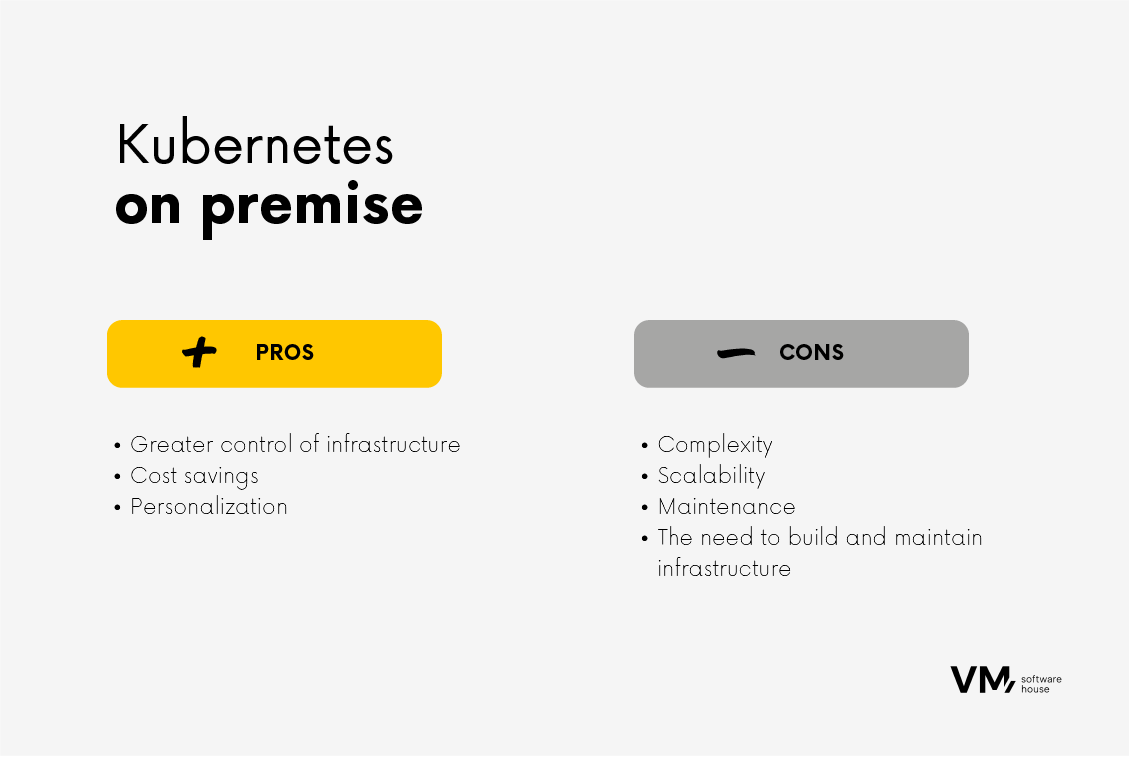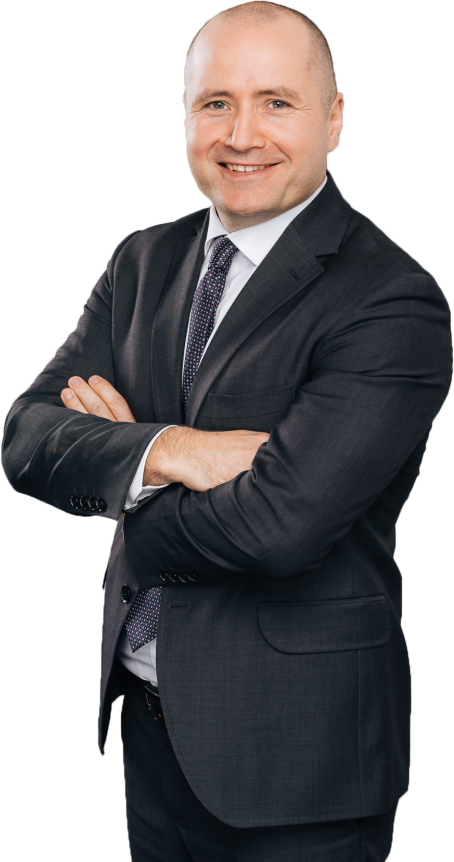
Table of Contents
What is Kubernetes?
Kubernetes (sometimes shortened to K8s, where 8 stands for the number of letters between the “K” and “s”) is an open-source system for deploying, scaling, and managing containerized applications anywhere. Beyond running containers on multiple nodes, Kubernetes ensures the separation and isolation of applications from the infrastructure. The framework’s success is assured through versionable text configuration files, comprehensive features, and third-party integrations. Unsurprisingly, it is currently a “developer favorite,” boasting over 5.6 million users. Kubernetes automates operational tasks in container management, featuring built-in commands for deploying, adjusting, and scaling applications to meet changing needs, as well as monitoring. This makes application management straightforward. While designed to work seamlessly with various cloud providers, Kubernetes can also be deployed locally.Kubernetes’s deployment models
Kubernetes offers a flexible architecture and supports different deployment models, enabling organizations to select the one that best suits their needs.1. Local deployment
- Self-managed cluster: Organizations configure and manage their local Kubernetes clusters in this model, taking on responsibilities for hardware, network, and infrastructure procurement and maintenance. While offering full control, this approach demands significant operational effort.
- Managed Kubernetes solutions: Some companies opt for specialized local solutions like OpenShift or Rancher to streamline the management of Kubernetes clusters in their data centers. These solutions offer tools and platforms to make deployment and operations easier.
2. Cloud deployment
- Managed Kubernetes services: Public cloud providers, such as Amazon EKS, Google GKE, and Azure AKS, offer fully managed Kubernetes solutions, simplifying cluster management. In this model, organizations deploy clusters in the cloud, leaving control plane management, upgrades, and scalability to the provider. This approach alleviates the operational burden.
- Hybrid cloud: Some organizations adopt a hybrid cloud approach, deploying Kubernetes clusters in both local data centers and public cloud environments. This allows flexible workload deployment with a combination of self-managed and cloud-based clusters.
- Multi-Cloud: In this model, organizations leverage multiple public cloud providers to mitigate dependence on a single provider, allowing them to deploy Kubernetes clusters across different cloud platforms.
Kubernetes locally
Running Kubernetes locally can benefit organizations that require more control over their infrastructure, have strict security requirements, or must comply with regulatory standards. Choosing and configuring the appropriate infrastructure for a Kubernetes cluster is a challenging task that demands extensive knowledge. Setting up and managing a cluster using an open-source Kubernetes distribution requires planning the number of master and worker nodes needed, determining allocated resources for each, and ensuring sufficient storage and networking.Kubernetes Cloud
Initially developed by Google, the Kubernetes platform is now maintained by the Cloud Native Computing Foundation (CNCF). Kubernetes can manage containers across diverse environments, including local data centers, public clouds, and hybrid clouds. Google Cloud provides a managed Kubernetes service called Google Kubernetes Engine (GKE). This service is specifically designed to streamline the deployment and management of Kubernetes clusters on the Google Cloud Platform (GCP). In addition to GKE, other cloud providers, such as Amazon Web Services (AWS), Elastic Kubernetes Service (EKS), and Microsoft Azure Kubernetes Service (AKS), offer managed Kubernetes services. These services enable the deployment and management of Kubernetes clusters in the cloud without the need to concern oneself with the underlying infrastructure.
Locally or in the cloud – assessing business and technical requirements
Deploying Kubernetes in an on-premises or cloud environment warrants careful consideration of the organization’s specific needs and constraints. A phased approach may be advisable, with some workloads running in the cloud and others locally to achieve the optimal balance. Informed decision-making requires close collaboration with operations, finance, and compliance teams. We will now discuss some key factors you want to consider when choosing an implementation.1. Scalability
Effective scaling requires careful planning. Evaluate your organization’s growth strategy and determine whether there is a need for the capability to scale resources up or down swiftly.- Kubernetes in the cloud – Cloud providers offer scalable, easily shared, and removable infrastructure.
- Kubernetes locally – Scaling Kubernetes locally can be more challenging, requiring careful planning, particularly regarding vertical scaling (adding more resources to a single node).
2. Expertise
- Kubernetes in the cloud – Operating effectively with Kubernetes demands a certain level of expertise. Organizations lacking the necessary skills or resources to manage their infrastructure may opt for managed Kubernetes services from cloud providers. However, reliance on managed services can lead to vendor dependency and limited customization options.
- Kubernetes locally – Running Kubernetes and configuring it yourself demands extensive knowledge and is operationally complex. A deep understanding of deploying Kubernetes in an existing environment, encompassing servers, storage systems, and network infrastructure, is essential.
3. Costs
The cost structures of on-premise and cloud deployments can vary significantly. Managed cloud solutions reduce operational costs, making them suitable for organizations with limited operational expertise. Local deployments require more hands-on management and involve upfront capital costs. In contrast, cloud deployments often follow a usage-based payment model. To determine the overall cost, calculate the total cost of ownership (TCO) for both on-premise and cloud solutions, including hardware, software, maintenance, and operating costs. Consider scalability costs, as cloud providers often provide payment models based on usage. At the same time, on-premises solutions may require upfront capital investment. Additionally, compare the operational costs of maintaining and managing on-premises infrastructure with the ease of use and management in a cloud environment.- Running Kubernetes locally can be more cost-effective, but it entails additional expenses for hardware and infrastructure.
- Kubernetes in the cloud – Running Kubernetes in the cloud can be expensive, particularly for large deployments. Expenses may include computing resources, storage, and network bandwidth.
4. Security and control
Running Kubernetes securely demands careful planning and configuration. Specific security or compliance requirements within organizations may influence the choice of deployment. Therefore, it is important to determine the data security level and compliance requirements. Some industries, like healthcare or finance, may require strict local deployments for data control. Data sovereignty and privacy considerations are vital, especially for organizations operating in multiple regions or countries. Determine whether you need full control over your infrastructure or if you can leverage managed services from a cloud provider, even at the expense of some control. Consider the effort needed to maintain and upgrade Kubernetes clusters, including patches, security updates, and hardware maintenance.- Kubernetes in the cloud – Cloud providers like AWS, Google Cloud, and Azure provide managed Kubernetes services that help with various security aspects, including automatic updates and monitoring. However, users are still responsible for configuring and utilizing these services securely.
- Kubernetes locally – Organizations seeking greater control over their infrastructure may opt for local deployment, enabling customization to meet specific needs, such as stringent security requirements or compliance with regulatory standards. Running Kubernetes locally gives organizations more control over their security posture. Still, it requires additional efforts, such as configuring firewalls and intrusion detection systems.
5. Resource requirements
Kubernetes requires a certain number of resources for effective operation, with the exact requirements dependent on the cluster’s size and the number of applications it hosts. Choosing an appropriate resource deployment requires analysis, considering the availability of specialists managing on-premises infrastructure versus utilizing managed cloud providers. Networking is a crucial factor when running Kubernetes. Organizations must ensure their applications can be accessed from outside the cluster while ensuring security and isolation from other applications within the cluster.- Kubernetes locally – may require owning and maintaining physical hardware, which may be appropriate for organizations with existing data centers.
- Kubernetes in the cloud – utilizes the resources of a cloud service provider.

Summary
Organizations often use a mix-and-match approach with these implementation models based on their needs, goals, constraints, and the compromises they are willing to make. For instance, they might use cloud-managed Kubernetes for some applications while maintaining a local cluster for others. Key elements to consider when selecting a deployment solution include:- Assessment of the organization’s workload
- Budgetary constraints and long-term cost projections
- Specific safety and compliance requirements applicable to the industry.
- Assess the skills and knowledge of your team
- Plans for the development of your organization.












